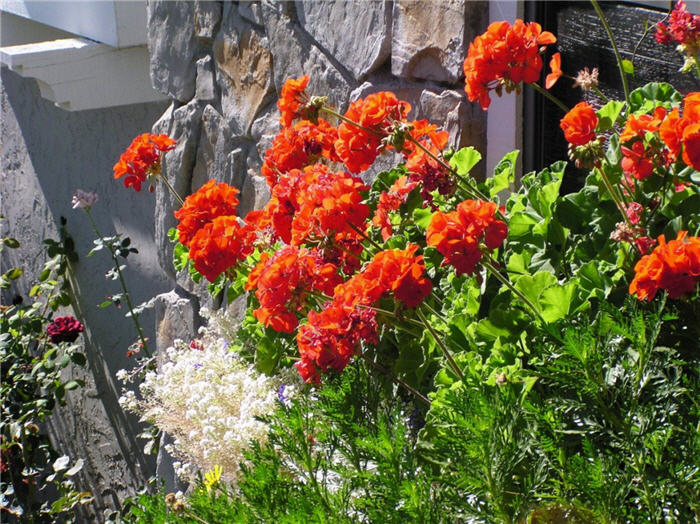| Botanical Name: Pelargonium x hortorum | |
| Common Name: Garden Geranium |

-
Anatomy
-
Culture
-
Design
Plant Type
Perennial, Annual
Height Range
1-3'
Flower Color
Orange, Pink, Red, Violet, White, Multi-Colored
Flower Season
Spring, Summer, Fall
Leaf Color
Bronze, Green, Dark Green, Red, White, Yellow, Variegated
Bark Color
n/a
Fruit Color
n/a
Fruit Season
n/a
Sun
Full, Half
Water
Medium
Growth Rate
Moderate
Soil Type
Sandy, Clay, Loam
Soil Condition
Average, Rich, Well-drained
Soil pH
Basic
Adverse Factors
n/a
Design Styles
English Cottage, Mediterranean, Ranch, Spanish
Accenting Features
Showy Flowers
Seasonal Interest
Winter, Spring, Summer, Fall
Location Uses
Indoor, Patio, Raised Planter
Special Uses
Container
Attracts Wildlife
n/a
Information by: Stephanie Duer
Photographer: GardenSoft
Photographer: GardenSoft
-
Description
-
Notes
Garden Geraniums are shrubby, tender perennials that we grow as annuals due to their distaste of our cold winters. They come in a wealth of colors, both flowers and leaves. The flowers are actually clusters of lots of small flowers, blooming nearly all summer. The leaves are large, round, sometimes lobed, sometimes scalloped, typically green, though some have fabulous zones of red or mahogany, while others have white or other variegations. Many have a pleasant, musky scent. There are also ivy geraniums and scented geraniums; see those data sheets for more information.
Grow geraniums in full sun to part/light shade, in well amended, well draining soil. Geraniums are particularly well suited to container culture. Deadheading will encourage steady, summer-long blooming, and regular feeding with a fertilizer high in phosphorus and potassium will also keep them blooming. They combine well with alyssum, gomphrena, and petunias, though I admit a preference for mixing them with salvia, in honor of the A.A. Milne poem about the Dormouse (delphiniums just don't do well here...) Geraniums overwinter very well indoors if given a sunny winter and not a heavy hand in watering.